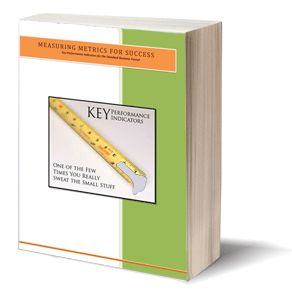Measuring social influence is essential for any modern business, particularly start ups and social influencers. Knowing how to accurately measure your impact can have a huge impact on the success of your enterprise, as it allows you to assess the effectiveness of particular strategies or campaigns.
That’s why in this blog post we’ll be taking a comprehensive look at measuring social influence, exploring topics like different metrics used to calculate reach and engagement with content, as well as actionable best practices that will help you get maximum value out of every campaign. So if you’re looking for insight into tracking the social influence of your brand or product then you’ve come to the right place – read on for more!
After an intense week of social networking that ended with a conference, (Distilled in New Orleans) I think I finally have a better understanding of what I should be doing. It’s taken a long path to get me here; I thought I’d share it with you, our readers, in the hopes that you’ll gain some usefulness.
Sometimes, I think about hiring someone else to do my social networking – some social media guru who can turn each tweet into gold. According to the analytics, according to the numbers, I’m doing it wrong.
A WTF Moment…
For instance, when you’re unfollowed by over 300 people in a week, it’s a big hit to the ego. This happened, although I haven’t changed anything. I engage with my followers, share great links, and continue to add great people to my Twitter and Facebook lists.
Establishing and assessing social influence is a central tenet of branding. Therefore trusting your expertise and trusting you is ultimately what people are looking for. To measure the impact of your brand, take advantage of content clustering in order to understand what topics you’re emphasizing on social media. Furthermore, use topic resonance to determine how much value people find in your content sharing – making relevant comparisons with other brands as necessary for deeper understanding. Brand identity has an integral function when it comes to gauging sociocultural potency; build up your presence across platforms so that its effectiveness can be quantified and optimized accordingly through strategic decision-making.
Now, around Level343, everyone can attest social is a big topic for me. This is one reason we love to include various social networking blogs. Every so often, we even send them out as guest posts. I’ve been an avid troller of top Twitter analyzers, in fact.
Now, let me be really honest and quite opinionated; none of us get it. I don’t’ care if it’s a paid or free tool, not one of these things has been truly able to capture how well we’re doing with our social networks. How can I tell?
Signs of Movement, Authority and Influence…
- We often receive wonderful emails from our readers.
- We close new clients on a monthly basis.
- At conferences, people recognise me and talk about the impact we’ve had on their lives and work.
- In short, there’s been a lot of positive movement and recognition as authorities in certain areas of the online marketing industry.
And yet… and yet, I look at Klout, Twitalyzer, the top respected analytics (or at least the ones everyone says they use), and my accounts suck. Not only do they suck, but also they tell a tale of miserable failing.
To Hell With the Numbers
What I’ve noticed is the RT’s you get, how many new followers per week, how many FollowFridays you’re mentioned on – they don’t matter. I don’t care what the numbers show. Why?
The metrics by which they’re choosing to grade me are not of value to me. Their social influence means nothing to me.
Let’s take influence, as an example. What does it really mean for these programs? Not too much in the grand scheme of things. A better measure of influence for us seems to be things like:
- Amount of incoming traffic – Is it going up?
- Amount of visitors – Are there more return than new? If yes, good.
- Comments – Are readers commenting and engaging?
- Engagement – Are followers responding in conversation?
- Clients – Do we have any?
- Potential Clients – Are people contacting us for work?
See, we put out approximately 15 – 20 pieces of content a month. We get excellent returns for those pieces, especially when you consider how many writers work on our blog. Depending on where they’re posted, we get anywhere from 30 – 300 RTs, 40+ comments, lots of good link love and meet wonderful people who read and like them.
The Big Picture
This may not seem like a lot to some people, but we have to look at the big picture. The big picture is a 2000% growth or more in all areas of our site over the eight, nine months. It’s working with the type of clients we’re looking for – the ones who respect our opinions and expertise. It’s people coming to us for thoughts about XYZ or asking us how to do ABC.
This isn’t braggadocio; far from it. This is simply pointing out that, no matter what the Twitalyzers or Klouts or Influence XYZPrograms say, we’re doing something right. Could I buy followers off eBay or Fivver? Probably. Could I manipulate or otherwise game these systems to artificially hike my scores? Could I fake these results? We all know the answer to these questions.
The Total Answer, Bright Light, Shining Lightbulb of Understanding
Thinking about all this, it hit me. I could fake those results and get the numbers I really want to see. Not only that, but nobody would know the difference! How can these signals continue to be as important as they’ve been knowing that?
So what’s the real answer, then, if it isn’t numbers?
Well, as much as we use social strategy as a way to get numbers, we need to change what we look at. We’re building a community, not just a way to funnel money to our site. If you really want to build a brand, as I wanted to do when I first started engaging through social media, you have to have a face.
People have to know who you are to be able to really like what you say.
Real influence is changing. For example, You’d think the New York Post is influential wouldn’t you? Yet, for every 45 articles they put out, they might get one link back (or one citation). Other places, you can post two articles to get a link. Some places, a single article can get tons of links, in the form of quotes, citations, or ongoing conversation about the article.
What’s Important to You?
As a CEO, brand strategist, etc., what’s important to you? Is it having high numbers? Do you want blind influence, or do you want people who actually engage with you, come to you for help, or merely to say hi? To me, this is more powerful than numbers can ever be.
So, it finally comes down to building a community instead of faking one. Building your authority and trust around your expertise. You can have a ton of fake storefronts to make something look like a huge town (metaphorically speaking), but a stiff wind can blow it over, right? Think about your favorite influence measurement tool – could it withstand a rough smack?
In other words, if you lost 300 people in one week, what would happen to your numbers? Would you freak out if your numbers dropped dramatically?
Conclusion
We need to find other ways to measure how we’re doing in social. How can you really measure if what you’re doing is working? Can you really trust these numbers – should you?
Let’s finish this article up with this: look for other ways to find out how you’re doing. Don’t forget about the people who follow, read, and learn to respect you. They aren’t just numbers. They’re your business cheerleaders.
What do you think? What signals should we really be using to measure our social standing?








































6 Responses
Gabs..
here’s the thing..
it doesn’t matter a number says, wait, yes it does..
numbers = data and..
Data should be viewed as a critical driver of your business. It should permeate every facet of your organization and be leveraged strategically in all of your business decisions. From services such as dimensional data modeling, information life cycle management, and enhanced reporting, to the development of key performance indicators, metrics, and robust business analytics, for search and social.
let’s say.. first..
we figure out how they arrives at that number.. (speaking cockney, sorry),
then we use other measurement numbers to gauge other properties of the entity..
So we use klout and compare with peerindex with twitter grader with sysymos, empire avenue.
from there if it’s a business search comes into play.. and people that dont get search’s influence need to read my next blog i am writing..
here’s a quote from it..
“Google does not freely publish the specific criteria included their ranking algorithms. To do so would be idiotic, as the webmasters who would most benefit from knowing that information are those whose intent is to maliciously manipulate the search results.”
Very good point. Sometimes the influence is wrongly “measured” by the machines. Some of them consider you if you use a certain tool, some others take different criteria, they’re just machines. As about Twitter, I am unfollowed at a rate of 50-60 accounts/day. These accounts are machines or autobots or automated things, one doesn’t measure anything by counting them. Your Twitter accounts are considered highly influential, so don’t even think to bother. You’ve got comments, you’ve got clients, you have a very determined niche, which is not the case with a lot of people on the net. Klout says about one of mine that I’m “highly religious”, which is the stupidest thing to affirm, I don’t follow the sort and I don’t tweet about such, but that’s the point I just said.
Your @SEOcopy is followed by Obama’s account and you don’t follow back. What’s more influential than that? You lost 300 smammers from your “followers” crowd. Nothing. That’s nothing. You gain by this. You know why? When people are checking you, they see people, not fakes. So, you have your signals of influence, 🙂 Good luck! I’ll be back, 🙂
Hey Rudy, lolol I had a good laugh when you enlightened me that Obama was following me and I wasn’t following back. It also confirmed what I’ve been saying. Influence has yet to be grasped by numerical data… at least not in my humble opinion. The day they can convert conversations including connections made, then, and only then I will start paying attention to numbers. My favorite line lately as been conversation is the new currency. Need I say more? 😉
I think that everyone has different goals and most of the measurement tools look at specific criteria that doesn’t match the goals most people have.
I do not use Twitter to obtain clients. I use it to stay connected to those in my industry, to find great articles, to meet smart people in this industry and to let them know who I am. All of those goals are met for me.
However, goals for my clients are different, obviously. Do we meet the goals we planned on? We better! 🙂
Great article and insights, as always.
Gabriella, you make a good point in that it’s about **your** KPI, not, what some program thinks (often measuring reach as Influence) are performance indicators. Social Analytics are in their infancy taking baby steps toward the type of measurement other Internet marketing techniques take for granted.
When I first started on the Social Media journey I felt at home because it reminded me of SEO in the early days. The path to determine what “matters” and what doesn’t will be long. I found myself examining click streams for things to measure to get a real handle on what could be used for KPI.
IMO, most are measuring pseudo Influence because I see that of the 10-15 twitter follows I’m getting at least 70% are gaming the system looking for autofollow or are outright bots. So any measurement of anything that uses followers is seriously skewed!
Indeed, Terry… I keep looking to make sense of numbers and analytics because I know it’s the right thing to do. Whether for Level343 or for clients. They are supposed to matter, I get it. But, we as SEO professionals, Social media Strategists, Content Developers, whatever your niche may be need to stop and REALIZE we have to “earn” the trust, the respect and ultimately the ranks.